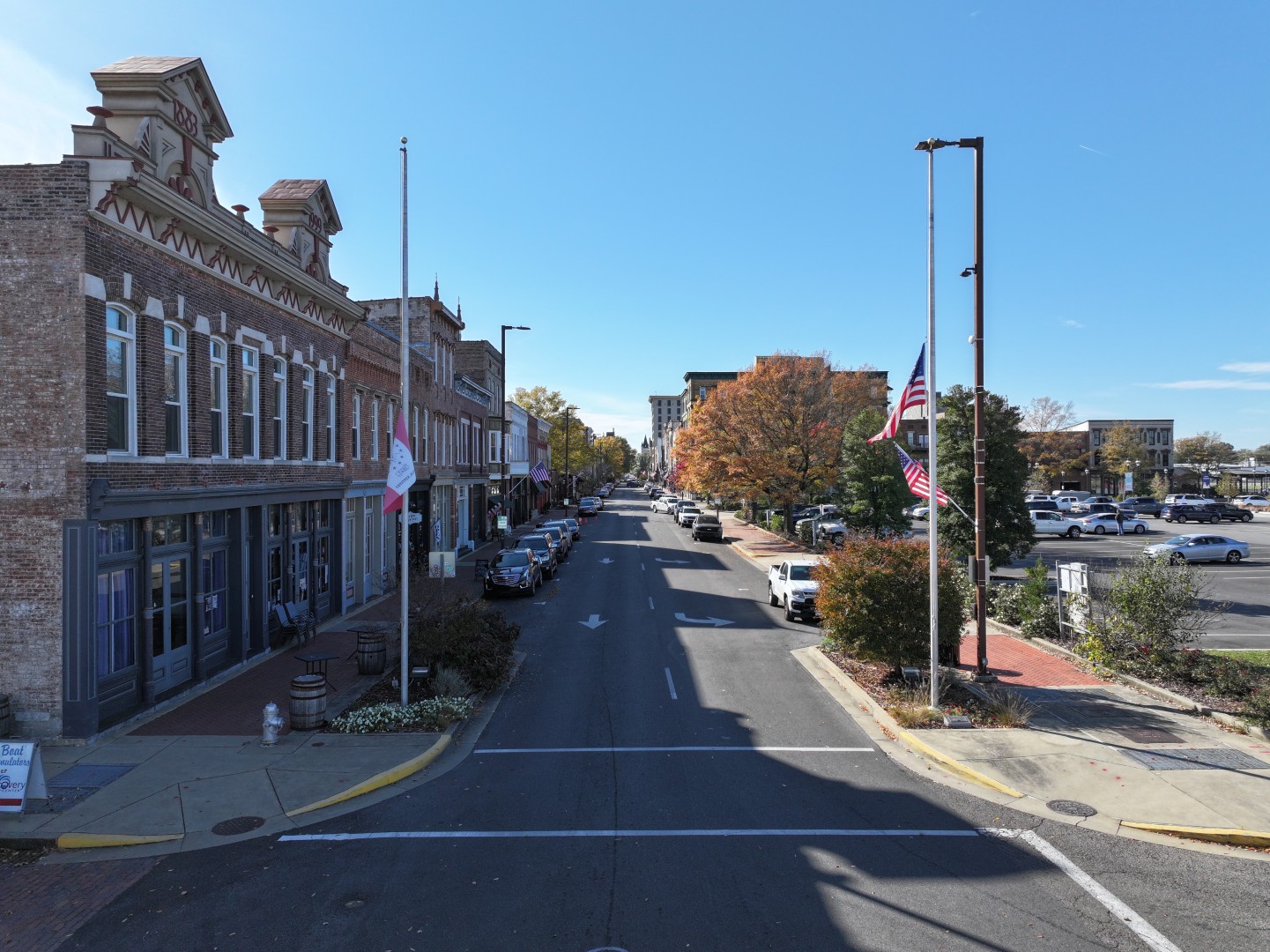When fall visitors arrive, a downtown either feels easy and inviting or it doesn’t. The difference often comes down to infrastructure and how we design streets, sidewalks, crossings, lighting, and signage to support people first.
“Walkability of your downtown is crucial all season long,” says Melinda Winchester, M.S., B.S., Grants Coordinator and Historic Preservation Specialist at BFW/Marcum. “A connected grid of streets with visual appeal along the route and public spaces such as parks, plazas, and benches can turn your downtown into a destination.” She explains that improvements such as wider sidewalks, curb ramps, visible crossings, traffic-calming efforts, consistent lighting, and clear directional signage are the kinds of simple moves that create a better experience.
Why this matters (and works)
Walkable places are proven economic drivers. Only 1.2% of land in the largest U.S. metros is considered “walkable urban,” yet those areas generate nearly 19% of U.S. GDP. Lighting plays an equally important role: a University of Pennsylvania study of Philadelphia’s LED streetlight upgrade found 15% fewer nighttime outdoor crimes overall and 21% fewer gun crimes on upgraded blocks. When it comes to safety, the Federal Highway Administration has shown that median refuge islands and raised medians can cut pedestrian crashes by almost half on multi-lane roads. These numbers confirm what residents and visitors already sense when a street functions well: brighter corners, safer crossings, and clear signs that encourage exploration.
What communities can do
“Providing a sense of safety while walking encourages more foot traffic into your shops and restaurants,” Melinda explains. “This can be accomplished by implementing thoughtful traffic calming strategies that promote slower driving and reduced speeds creating clear pathways for pedestrians and bicyclists. Downtowns can also add art and culture to their environment within the design of crosswalks with the use of bold vibrant colors and creative designs.” She adds, “Lighting and visibility promote a sense of safety when appropriate styles and consistent light fixtures are placed strategically throughout the downtown. Clear signage is equally important because it helps people navigate and discover downtown destinations, which in turn supports local businesses.”
Kentucky communities are already seeing the benefits of these kinds of investments. The state’s visitor economy recently topped $14 billion in annual economic impact, supporting close to 100,000 jobs. At the same time, Kentucky Main Street communities reported more than $61 million in downtown investment in 2023, along with 649 net new jobs and 126 new businesses. These gains are not accidental. They reflect consistent design standards, alignment with grant programs, and steady improvements to public spaces that make walking the easiest and most enjoyable choice.
How BFW/Marcum helps
BFW/Marcum teams pair historic preservation expertise with civil, traffic, and lighting design so improvements fit the character of the place while also meeting funding and compliance requirements. “A consistent look matters,” Melinda emphasizes. “Appropriate styles and consistency of light fixtures placed strategically throughout downtown streets can create a safer and more welcoming environment. That consistency also reinforces the sense of place.” She adds that clear signage then ties it all together, guiding visitors naturally toward businesses, parks, and civic spaces.
On projects across the region, BFW/Marcum helps communities map their walkable networks, bundle quick-win safety fixes with longer-term investments, and right-size lighting and signage strategies to match each town’s identity. The result is downtowns that are not only functional but also welcoming, memorable, and resilient.


Recent Comments